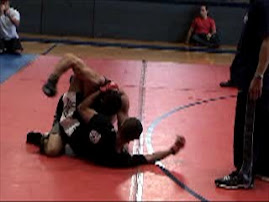 One of my favorite books is William Julius Wilson's When Work Disappears: The World of the New Urban Poor. Among many other points, one of the important issues Wilson raises is the further damage done to poor African American communities when successful professionals move away to live in wealthier neighborhoods. Given the elevated levels of drug trafficking, property crime, and violence that exist in pockets of destitute communities, one cannot blame those who can afford to move out when they do so.
One of my favorite books is William Julius Wilson's When Work Disappears: The World of the New Urban Poor. Among many other points, one of the important issues Wilson raises is the further damage done to poor African American communities when successful professionals move away to live in wealthier neighborhoods. Given the elevated levels of drug trafficking, property crime, and violence that exist in pockets of destitute communities, one cannot blame those who can afford to move out when they do so.However, their departure lessens poor communities' social capital, including (1) the number of professional role models for youth; (2) the professional networking opportunities for adults; and (3) the number of accessible jobs that come along with those professionals' businesses if they practiced in those communities (e.g., administrative support staff). So in addition to the already high levels of unemployment, the collective attitude of impoverished communities dampens in other ways.
The following article from the Los Angeles Times documents how this phenomenon is impacting an entire country: "Philippine workers abroad: The boon has a price." According to the article, "The poverty-stricken nation of 90 million has seen 10 million workers -- more than 10% of its population -- join the overseas labor force."
Oddly enough, the country's current government supports the mass exodus of its professional and working-class demographics, as they send back literally billions to their families in remittances.
Filipinos sent a record $1.5 billion home in June as more sought work abroad. Remittances for the first six months of 2009 reached nearly $8.5 billion, a 2.9% increase from the same period last
year.
In her annual state of the nation address in July, President Gloria Macapagal Arroyo hailed remittances as a driving force behind the economy. Labor Secretary Marianito Roque separately described the remittance system as a source of pride.
"The flow of overseas worker money in an unstable global economy demonstrates the resiliency of the Filipino people," Roque said. "Under the worst circumstances, our workers are getting jobs and
sending home more money than ever. They are keeping the boat stable."
Is the boat stable or sinking? As Wilson states for America's black underclass in When Work Disappears, the same "brain drain" phenomena are happening in the Philippines. Moreover, struggling families are becoming further fractured, leading to rippling effects in the form of increased juvenile delinquency and school dropout. Overseas workers also run into marital stress and inadvertently discourage those back home to seek out employment and/or be innovative entrepreneurs.
The exodus of trained teachers, health professionals and engineers, some say, has done the Philippines more harm than good as those much-needed services go elsewhere.
[…]
The remittance system has also altered the lives of the stay-at-home families of overseas workers.
A recent International Monetary Fund study found that many extended families of overseas Philippine workers are refusing to pursue jobs at home that they consider too low-paying, preferring to rely on their monthly remittance cut.
There are social problems as well.
As parents leave home, children get left with relatives or friends who may not provide adequate supervision, which can lead to substance abuse and gang membership, says Tony Sarmiento, a Santa Barbara city official in charge of monitoring his town's overseas workers.
As a result, Sarmiento says, some workers abroad return home expecting to realize a dream of sending their children to college only to find that they dropped out of school in their absence.
"The worst part of this human export policy is that [the government doesn't] make the hard choices back home," said Benjamin Diokno, a professor at the University of the Philippines School of
Economics.
"We don't work toward a dynamic economy that would create more jobs," Diokno said. "Instead we rely on that paycheck from abroad."
The bottom line -- this global system is one that fosters international dependence and internal anomie. In the global free market, developing countries essentially export their citizenry as commodified labor for high-income countries, who then exploit the working class, thereby extending their global prosperity.
Working class Filipinos are exploited as maids in Hong Kong, as construction workers in Dubai, as gardeners in Honolulu. This globalized, capitalistic system is reminiscent of Hawaii's plantation society from the 19th century where America's wealthy plantation owners simply imported Filipino, Chinese, Japanese, Puerto Rican laborers as expendable plantation workers (not to mention colonization of the indigenous population).
Even highly educated professionals from developing countries are frequently underpaid once living in high-income countries relative to their western counterparts. But because their income in countries such as the United States, Canada, and the United Kingdom is still higher than what they would earn in their country of origin, they suffer the stratified pay difference in order to improve their own life and/or send money back home.
As an interviewee from the article states, "It's a toxic choice, but we have to go." Well, they wouldn't have to if (1) institutions in high-income countries did not exploit them as expendable labor; and (2) their country of origin revamped its economy so there was more incentive to stay home.



































